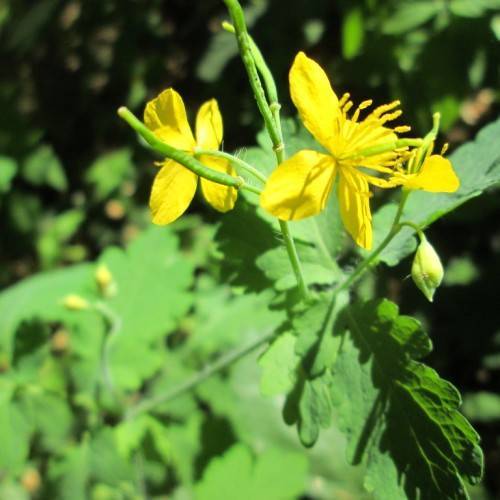
greater celandine
Chelidonium majus
Also Known As - Swallow Wort,Wartweed,WartweedCycle:
Herbaceous Perennial
Watering:
Average
Hardiness Zone:
4 - 8
Flowers:
Flowers
Sun:
Sun, Partial Shade
Soil:
Clay, Sand, Loam
Fruits:
Fruits Ready In Fall
Leaf:
Yes
Growth Rate:
Low
Maintenance:
Moderate
Poisonous To Humans:
Yes
Poisonous To Pets:
Yes
Invasive:
Yes
Care Level:
Medium
watering
When watering Greater Celandine, it is best to provide a moderate amount of water on a regular basis. This plant likes well-drained soil, so keep an eye on it to make sure it doesn't become soggy. During the plant's growing season (spring through summer months), water it when the top inch of soil starts to look dry. During the winter when the weather is colder, the plant will need less water; with the soil needing to dry out almost completely between waterings. Additionally, it is important to note that Greater Celandine has a low tolerance for water-logged soil.
sunlight
Greater celandine (Chelidonium majus) does best in full sun, receiving 6 to 8 hours of direct sunlight per day. The best time of day for sunlight for this species is morning light, which is usually considered to be between 9 am and 12 pm. This should be followed by 4 to 6 hours of indirect sunlight in the afternoon. Greater celandine prefers consistent sunlight throughout the day, rather than alternating sun and shade periods. It is tolerant of some shade in the afternoon, just make sure to avoid very dark areas.
pruning
Greater celandine (Chelidonium majus) should be pruned in early spring when actively growing, typically when the plant reaches 30-50 cm high. Depending on the size and age of the plant, careful pruning of up to 1-third of the plant can be performed. This helps to create a firmer and bushy structure as well as reduce the risk of mildew. The best way to prune is to cut stem tips back to 2 lateral buds, as this encourages fresh, new growth and can give the plant a fuller look. Pruning should also be done with sharp, sterile tools to minimize the risk of disease.
